 |
Zenith Transoceanic
H500 U.S.A. - 1951 |
 |
|
|
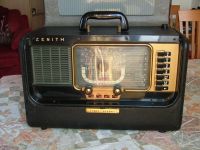 |
Italiano |
|||
|
|
|||||
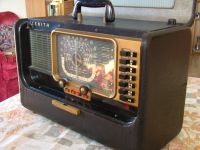 |
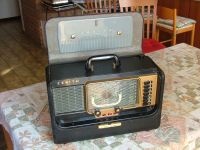 |
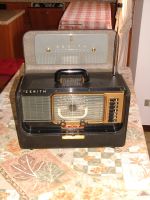 |
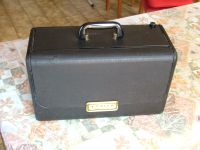 |
||
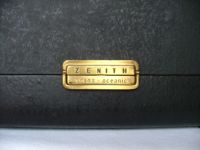 |
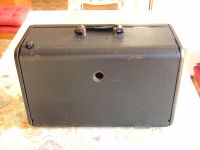 |
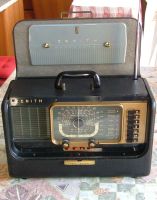 |
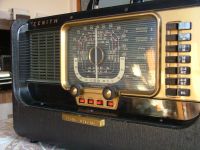 |
||
|
La Zenith Radio Corp. aveva dato il nome "Trans-Oceanic" a una serie di radio portatili prodotte in U.S.A. dal 1941 al 1981. Tali Radio divennero famose per le loro prestazioni, per la qualità dei materiali utilizzati e per l'ampia gamma di frequenze ricevibili, tanto che furono ampiamente utilizzate dai militari U.S.A. durante la Seconda Guerra Mondiale, da esploratori o naviganti che si spingevano fino a lontane regioni del pianeta dove la radiodiffusione non arrivava e si poteva ascoltare qualche segnale solo per mezzo delle Onde Corte, e per tutti gli anni '60 e '70 la Trans-Oceanic è stata fedele compagna di appassionati ascoltatori delle onde radio (S.W.L.) di tutto il mondo. Il modello H500 con telaio 5H40 aveva la forma di una valigia e fu introdotto nel 1951. L'H500 era una radio costruita e commercializzata negli Stati Uniti dal 1951 al 1953, utilizzava cinque valvole miniatura con zoccolo a sette piedini: 1U4, 1L6, 1U4, 1U5, 3V4 e un raddrizzatore al selenio 212-5. Le gamme d'onda ricevibili erano 7, una per le Onde Medie (da 540 a 1600 kHz) e sei per le Onde Corte (da 2 a 18,1 MHz). La conversione di frequenza era singola ed avveniva a 455 kHz. Nella parte alta del mobile in legno era situata la maniglia per il trasporto e si poteva estrarre l'antenna a stilo per le Onde Corte. Per l'ascolto delle Onde Medie, sotto al coperchio anteriore era fissata un'antenna speciale Zenith tipo Wavemagnet (una loop), la quale era staccabile svitando alcune viti zigrinate. Dentro il mobile era disponibile un cavetto rosso munito di ventose che si poteva utilizzare per attaccare l'antenna Wavemagnet al vetro di una finestra, al finestrino di un treno o in qualche altra posizione alla ricerca del miglior segnale (vedere il manuale d'uso). Sul pannello frontale della H500 era situata la scala parlante rettangolare con indice rotante, sotto c'erano le manopole per il controllo del volume con l'interruttore di accensione e la sintonia. La regolazione dei toni audio era possibile tramite i quattro interruttori rossi posti tra le due manopole sotto la scala. I sette pulsanti del commutatore cambio gamma erano situati a destra della scala di sintonia.
Nella parte sinistra del frontale
del mobile c'era la grigia che proteggeva
l'altoparlante, un magnetodinamico da 13.3
cm. L'alimentazione poteva essere fornita dalla rete
elettrica a 115 Vca oppure tramite una Batteria tipo
Zenith
Z-985 (9 e 90 Vdc) o equivalente. Il mobile in legno
era ricoperto da similpelle nera, e le dimensioni erano:
43 x 28 x 20 cm, mentre e il peso era di 8 kg senza la batteria.
IK3HIA © 2004 - 2025. |
|||||
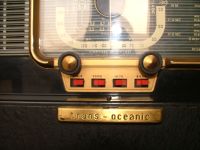 |
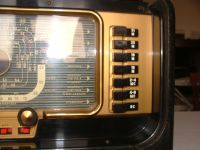 |
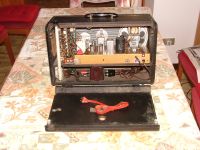 |
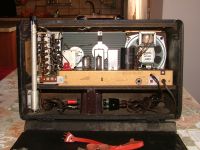 |
||
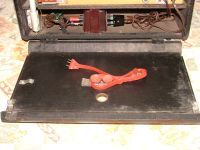 |
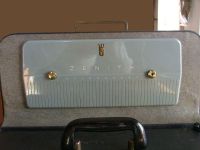 |
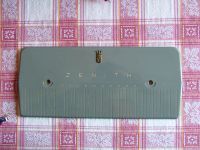 |
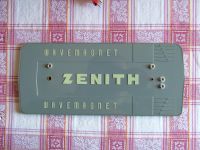 |
||
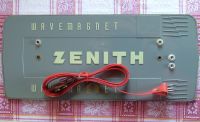 |
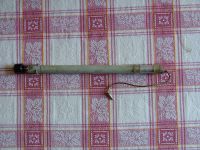 |
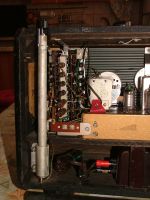 |
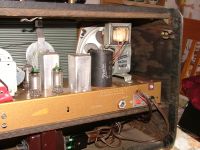 |
||
|
Zenith Radio Corp. had given the name "Trans-Oceanic" to a series of portable radios produced in the U.S.A. from 1941 to 1981. These Radios became famous for their performance, for the quality of the materials used and for the wide range of receivable frequencies, so much so that they were widely used by the U.S. military during the Second World War, by explorers or sailors who ventured to distant regions of the planet where radio broadcasting did not reach and some signals could only be heard by means of Short Waves, and throughout the 60's and 70's the Trans-Oceanic was a faithful companion to passionate listeners of the airwaves (S.W.L.) all over the world. The H500 model with chassis 5H40 had the shape of a suitcase and was introduced in 1951. The H500 was a radio built and marketed in the United States from 1951 to 1953, it used five miniature tubes with seven-pin socket: 1U4, 1L6, 1U4, 1U5, 3V4 and a 212-5 selenium rectifier. The receivable wavebands were 7, one for Medium Waves (from 540 to 1600 kHz) and six for Short Waves (from 2 to 18.1 MHz). The frequency conversion was single and occurred at 455 kHz. The carrying handle was located at the top of the wooden cabinet and the shortwave whip antenna could be pulled out. For listening to Medium Waves, a special Zenith Wavemagnet antenna (a loop type) was fixed under the front cover, detachable by unscrewing some knurled screws. Inside the cabinet there was a red cable equipped with suction cups that could be used to attach the Wavemagnet antenna to the glass of a window, to a train window or in some other position in search of the best signal (see the user manual). On the front panel of the H500 was located the rectangular dial with rotating index, underneath were the knobs for controlling the volume with the power switch and the tuning. The adjustment of the audio tones was possible via the four red switches located between the two knobs under the scale. The seven buttons of the range change switch were located to the right of the tuning scale. On the left side of the front of the cabinet was the grille that protected the speaker, a 5.25 inch magnetodynamic. The power supply could be supplied by the 115 Vac mains or via a Zenith Z-985 (9 e 90 Vdc) or equivalent battery. The wooden cabinet was covered with black imitation leather, and the dimensions were: 16.9 x 11 x 7.9 inch while the weight was 17 lb 9.9 oz without the battery. IK3HIA © 2004 - 2025. |
|||||
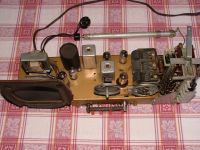 |
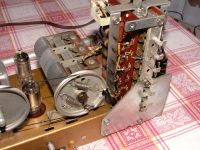 |
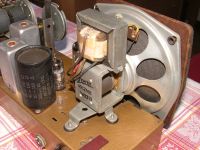 |
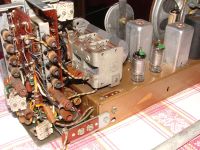 |
||
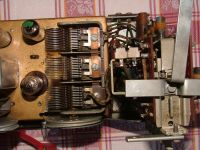 |
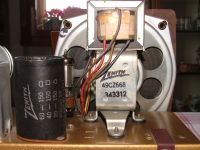 |
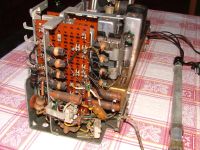 |
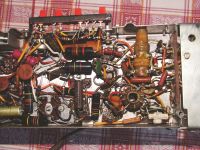 |
||
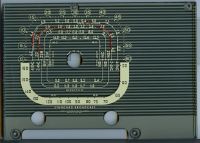 |
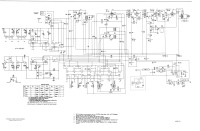 |
 |
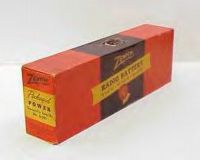 |
||
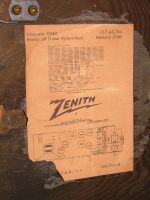 |
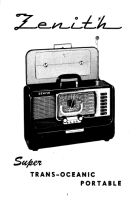 |
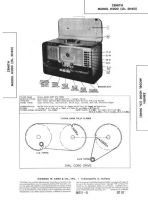 |
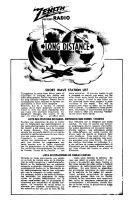 |
||
|
Return to top of page
|
|||||
|
|
Return to: Old tube Radio page |
Return to: IK3HIA
page
|